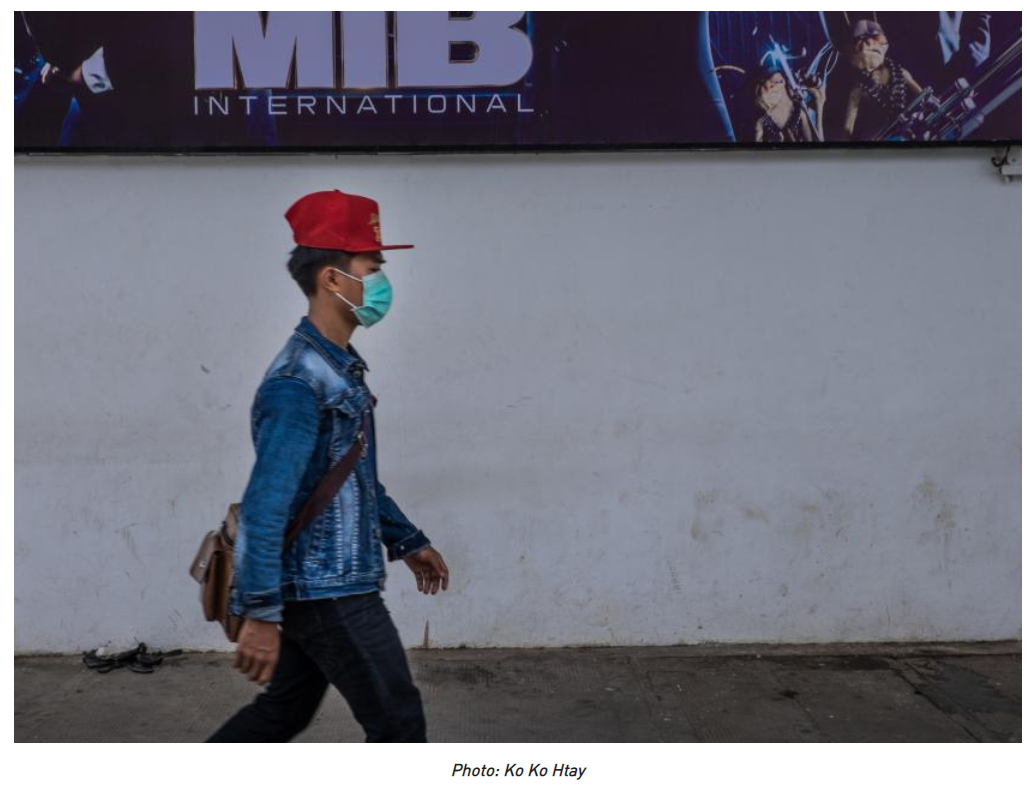Insurers see surge in Myanmar market interest driven by pandemic
While COVID-19 has increased awareness on the importance of health insurance and led to better sales of life and health policies, demand for other insurance products has taken a beating, industry leaders say.
For KBZ MS General Insurance, monthly sales of individual health products have gone up five times compared to pre-pandemic figures.
“This is partly driven by our extra 50 percent-free COVID-19 benefits campaign, but in general people are more receptive to the concept of protection when they’re faced with an immediate crisis,” said Anil Mancham, CEO of KBZ MS. The firm is a partnership between Yangon-based IKBZ Insurance and Japan’s Mitsui Sumitomo Insurance.
“Employers across the board are stepping up to provide health insurance for their employees, ranging from small companies to large corporates with over 10,000 employees,” he added.
Other insurance providers, such as AIA, Manulife, GGI Nippon Life, have seen similar increases in enquiries for health insurance coverage.
“After COVID-19 became more serious in Myanmar, we received more inquiries and requests for information on our social media about life and health insurance,” commented AIA Myanmar CEO Luc Nhon Ly.
Emerging challenges
However, semi-lockdown orders in Yangon and Mandalay, as well as curfews imposed across the country, have led to a drop in the general insurance market. There has been a more than 50pc drop in motor claim cases for some providers in April compared to the same period last year.
Mr Mancham pointed out that COVID-19 financial losses on business and individuals could bring about a decline in renewals of fire and motor insurance.
Travel insurance has also taken a severe hit after travel restrictions were put in place and tourism came to a standstill.
Historically monopolised by state-owned Myanma Insurance, the country’s fledgling insurance industry only opened up to private local players in 2013 and to foreign providers half a year ago.
Last November, five foreign life insurers and six joint ventures were given licences to enter the market. The licencing is a flagship project under the National League for Democracy government who hopes to draw on foreign investments and modernise the financial sector.
Recent changes to Myanmar’s monetary policy are expected to have an impact on longer growth plans, some insurers say. To mitigate the impact of COVID-19, the Central Bank of Myanmar this year lowered interest rates three times. The central bank rate is now just 5 percent, from 8pc before the pandemic struck.
As most insurers have government bonds and fixed deposits locked in at over 9pc interest rate, these investments will be rolled over into lower-yielding assets because of the rate cuts, said Mr Mancham of KBZ MS.
“For life insurance companies, the impact is more severe as savings products with policy terms of up to seven, nine or even 11 years are priced at high-interest rates, while actual investment yields will come down significantly over the years,” he added.
Adopting digital technologies
As a whole though, there is still significant room for growth in Myanmar. A 2019 IKBZ survey showed that less than 4pc of Myanmar people are insured. That is the lowest penetration rate in Southeast Asia and has implications across sectors. In the absence of life and medical insurance schemes, for instance, frontline healthcare workers and their families are exposed to even more financial risks.
To leverage on demand, KBZ MS plans to “push harder with offering insurance solutions through for example e-wallets and direct-to-consumer sales models,” Mr Mancham said. He stressed that business models will need to be adjusted to the “new normal”, since the impact of the lockdown and social distancing will likely be long-lasting.
Likewise, Manulife of Canada has launched a suite of digital tools in Myanmar to engage with customers online. “In many ways, COVID-19 is accelerating digital trends that are already underway,” said Yangon-based CEO Robert Elliott.
He remains optimistic about the Myanmar market, citing how past experiences suggest an uptake post-pandemics.
For example, there was an increase in insurance product demand globally several months after the SARS outbreak in 2003, said Mr Elliott, who is expecting a similar trend to play out in Myanmar this time.
“We are seeing some signs that COVID-19 is making people appreciate the value of insurance more, and also making them more aware of the importance of saving for retirement and for their children and families,” he added.
GGI Nippon Life shared that optimism, saying that although insurance activities have reduced, the health crisis raises market interest.
“We see this crisis as an opportunity for us to further adopt the use of technology in our business,” said CEO Tan Yeow Hau. It recently came up with a health insurance product that could be purchased online, including digital payments.
GGI Nippon Life is a joint venture of Japan’s Nippon Life Insurance and Grand Guardian Insurance, a subsidiary of conglomerate Shwe Taung.
But it may take longer to translate the growing interest into an actual uptake than neighbouring markets, analysts warn. Following a directive released on March 4, insurers in Myanmar must first obtain approvals from the authorities before introducing new products in the market,
While content with the current regulatory framework, AIA Myanmar CEO Luc Nhon Ly said it would be a lot better if the country adopts the file-and-use model, under which products can normally be launched without official permission, like in Thailand and Malaysia.
“We just need to be well-planned to manage those hurdles,” he said.
Source: https://www.mmtimes.com/news/insurers-see-surge-myanmar-market-interest-driven-pandemic.html


 Thailand
Thailand




